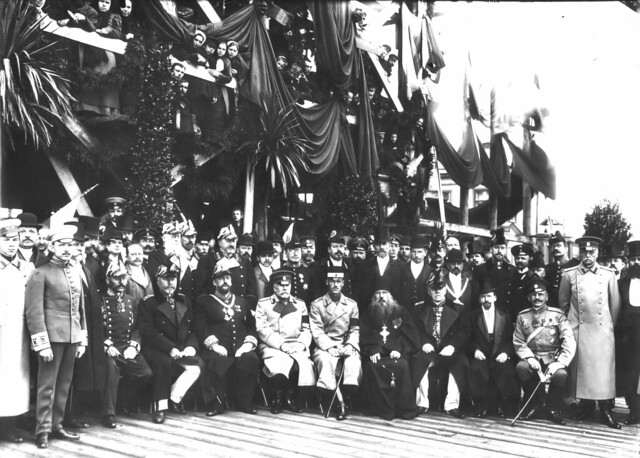
The Construction Committee. In the center (holding a saber) the royal patron of the committee the Great Duke Mikhail Alexandrovich Romanov, brother of the Emperor Nicolas II
The Jubilee Church project desired to combine traditional forms of ancient Russian architecture with new technology. Different concepts underwent review. Particular emphasis was placed on the desire for the church to resemble that of the Romanov reign, i.e. Muscovite Russia at the beginning of the 17th century.
Stepan Samoilovich Krichinsky (1874-1923) was selected as the project architect among the other three contestants in the competition of projects.

Krichinsky S.S.
Funds started to be raised in order to supply for the construction of the new Cathedral.
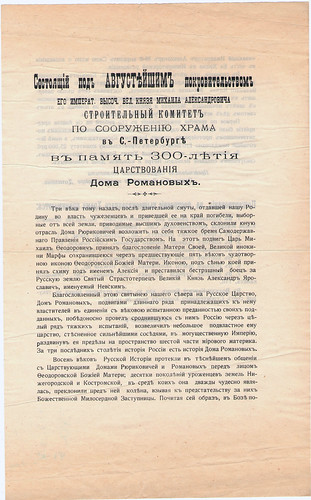
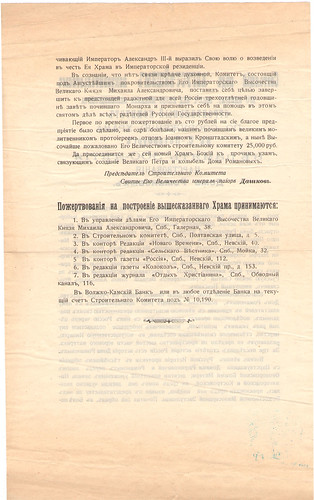
The calling of the Construction Committee to raise funds
The first 100 rubles donated were contributed by the Holy Righteous St. John of Kronstadt (he was on his deathbed at that time). The Emperor donated 25,000 rubles. Funds were raised by monasteries, government agencies, educational institutions, military units, railroad, city and provincial councils, banks, public institutions as well as private persons.
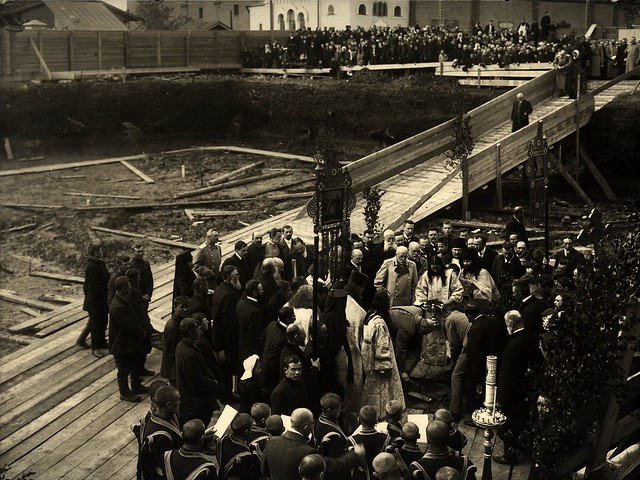
Laying the foundation of the Cathedral
Ceremonial laying of the Cathedral’s foundation took place on August 5, 1911, after site preparation and the erection of supporting framework for the building.
The short time available necessitated continuous adjustment of the building plans. Not surprisingly, the main event – the consecration of the upper Church – took place on January 15, 1914, later than previously planned. It was headed by Vladimir Bogoyavlensky, the Metropolitan of Saint Petersburg, who later on became the first new martyr. The ceremony was held in the presence of Emperor Nicholas II, members of the Royal family, the Government, the State Duma, students of educational institutions and the military. During the three years of war before the Revolution some plans concerning the Church were left incomplete. The original plan was accomplished only a hundred years later, during the restoration of the Cathedral.
However, despite this, in 1915-1916, next to the Cathedral the House of the Clergy was built, which existed until the 1960’s. It is being restored in accordance with the few surviving drawings and the only old photograph.
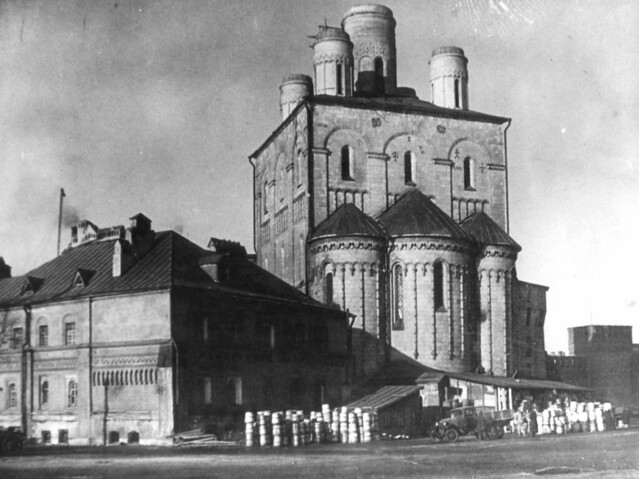
The only remaining photo of the Clergy House. The photo was taken probably around 1938, after the closure of the Cathedral, with the Dairy Factory located in it at that time
